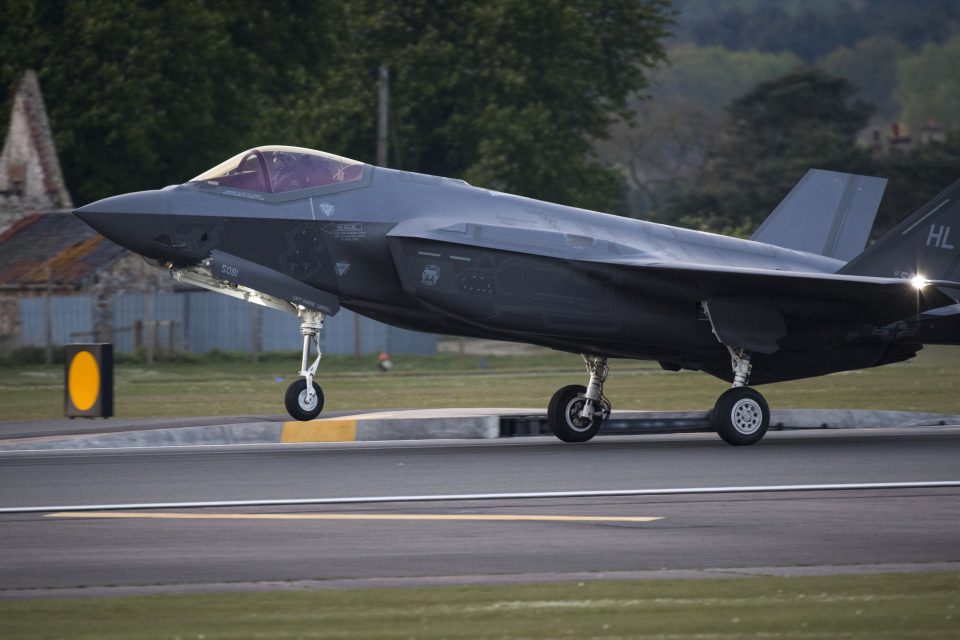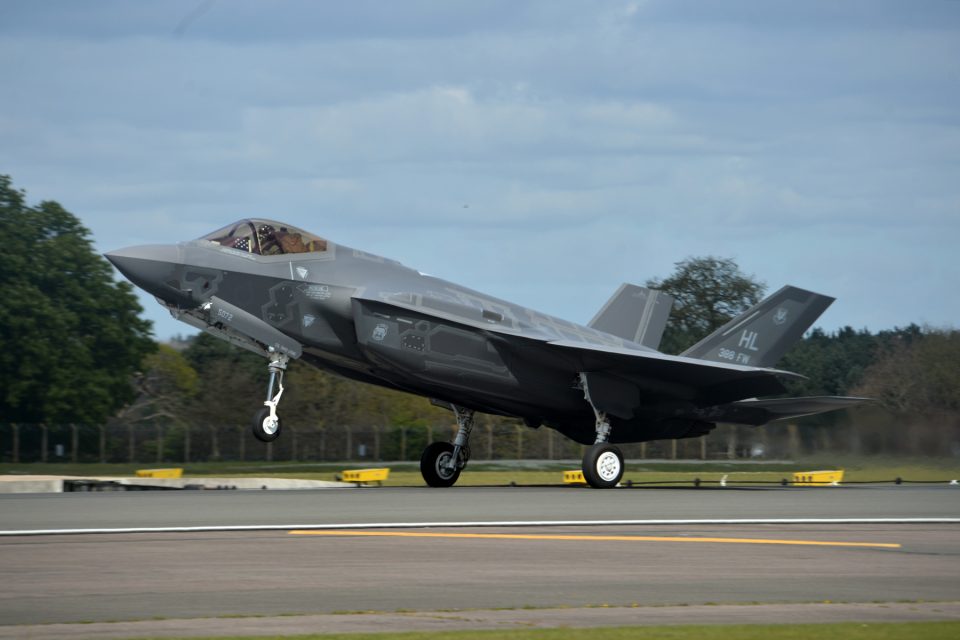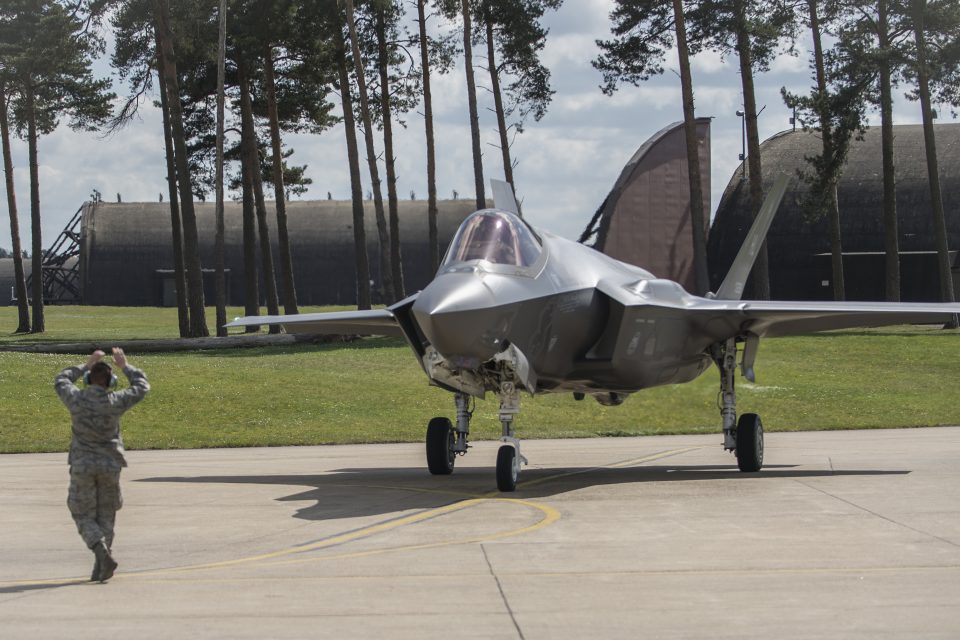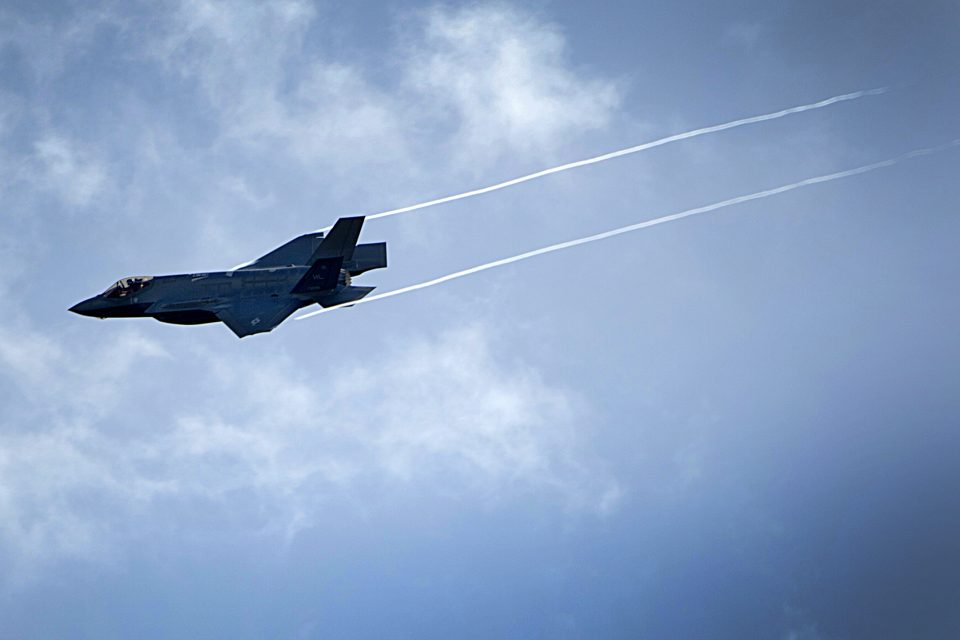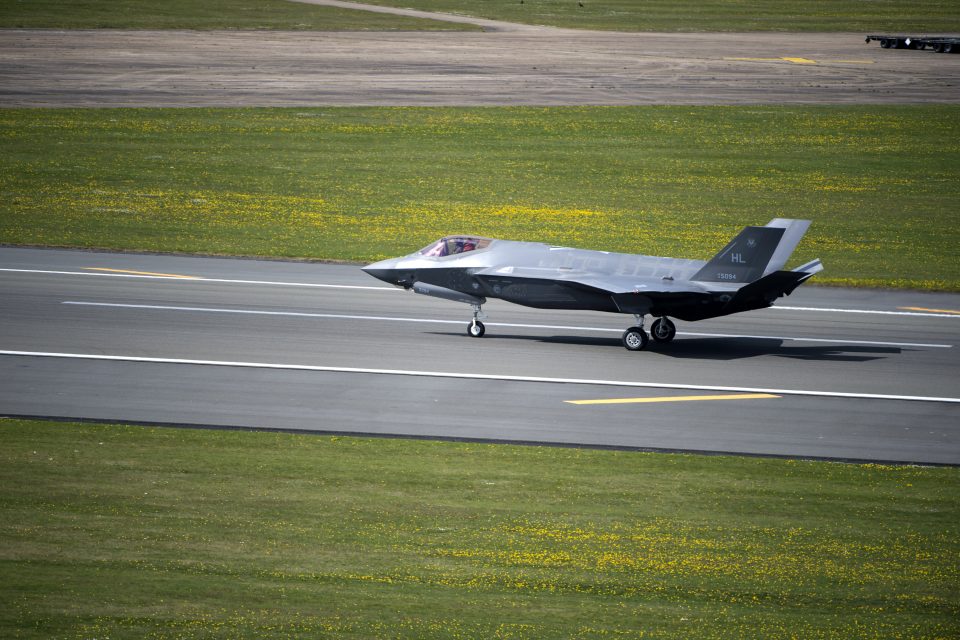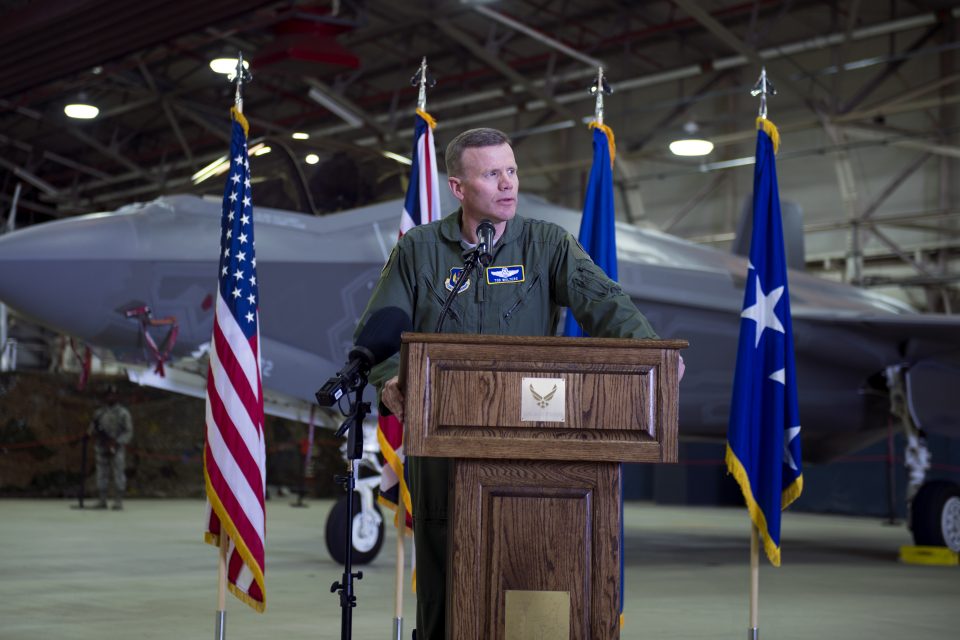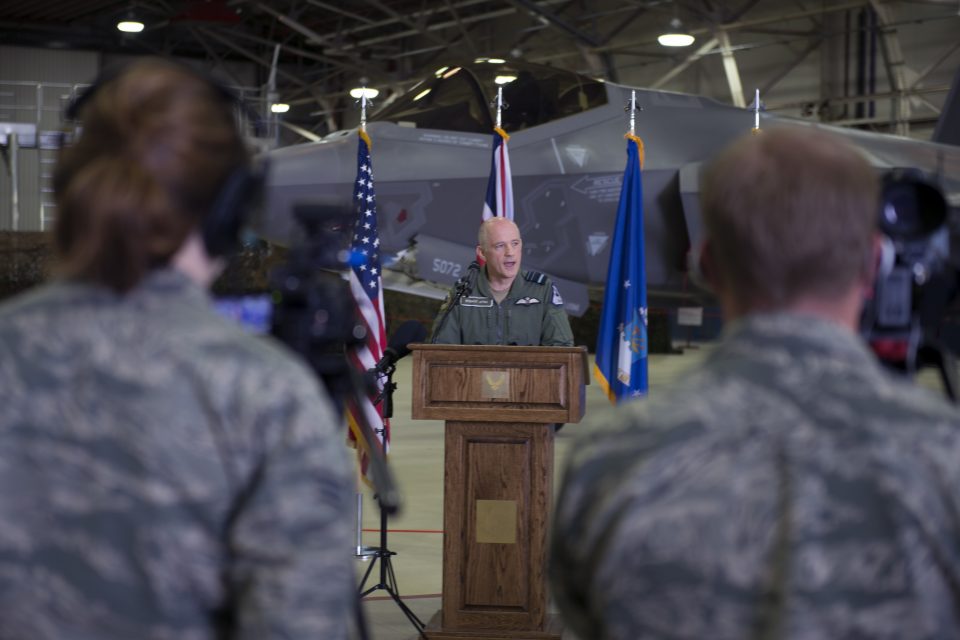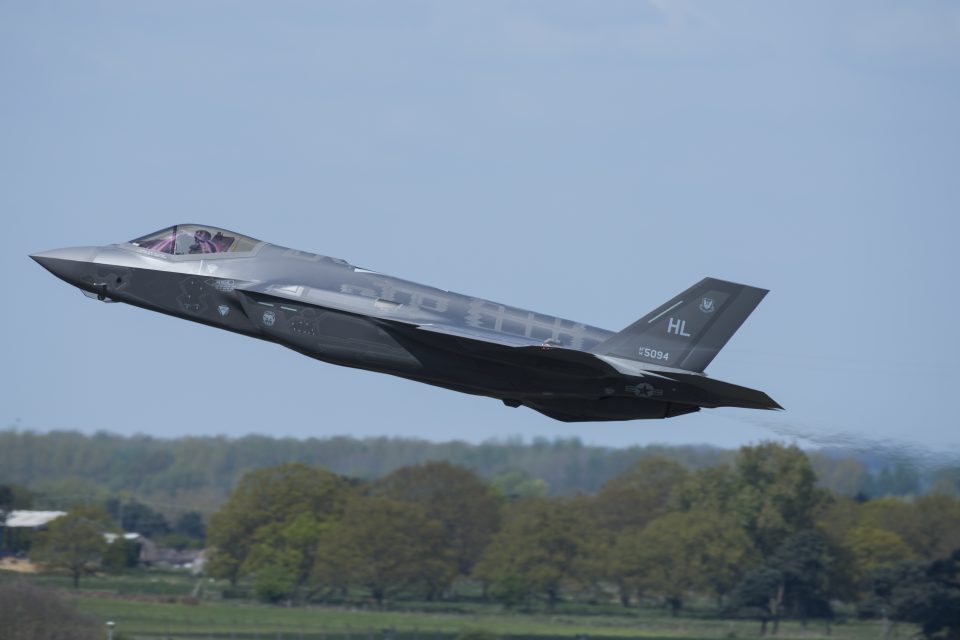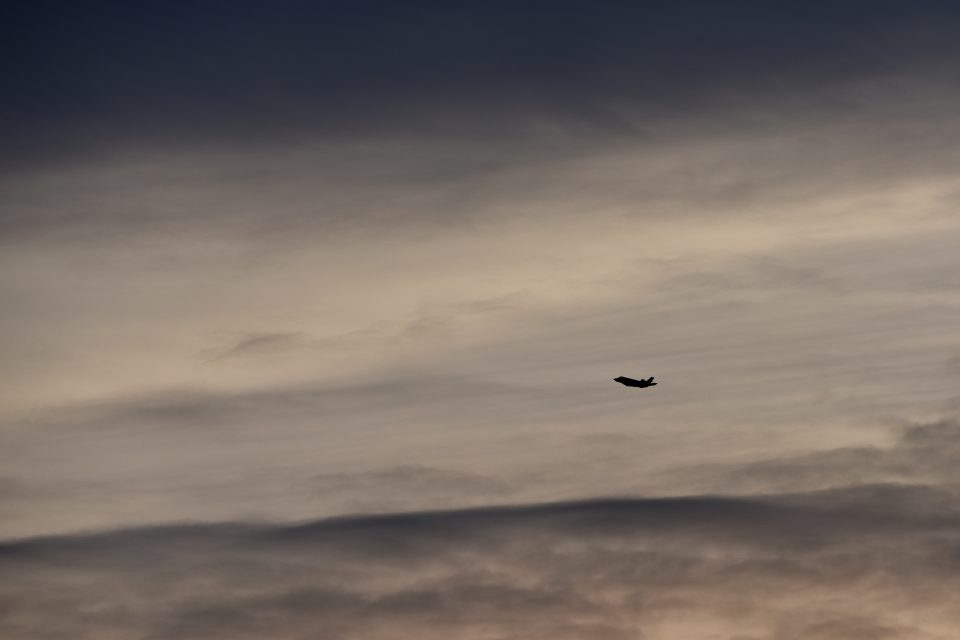2017-04-22 A Norwegian perspective on the importance of the F-35 for Norwegian defense and the significance of the arrival of USAF F-35s at RAF Lakenheath was provided by the head of the Norwegian F-35 program.
In a piece published on April 20, 2017 by Maryam Iqbal Tahir and entitled “The F-35 makes the entire defense force better,” a Norwegian perspective is provided by Maj. Gen. Morten Klever, program director of the Norwegian F-35 Program.
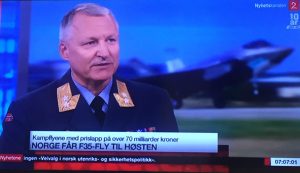 “Major General and program director for fighter jets Program Morten Klever, was recently a guest at the TV 2 News Channel, where he underscored the importance of the F-35.
“Major General and program director for fighter jets Program Morten Klever, was recently a guest at the TV 2 News Channel, where he underscored the importance of the F-35.
“The F-35 makes the whole defense force better and should help to prevent Norway from being attacked.
No matter what kind of conflict or threat we face, we will be dependent on air control.
The F-35 strengthens our ability to support the sea and ground forces and to deter a potential adversary, said Klever to TV 2 News channel.”
Commenting on the arrival of USAF F-35s to RAF Lakenheath, the Major General noted:
“It is a very important milestone for the F-35-program.
“It is positive that the United States has brought the new combat aircraft in Europe.
“This provides the foundation for important allied training, and confirms the US commitment to strengthen NATO.”
Allied training is a pillar of Norwegian defense and security.
This November Norway will receive its first F-35 and will then receive 6 aircraft per year until they reach a total of 54 around 2020-2021.
http://nettsteder.regjeringen.no/kampfly/
Translation from Norwegian provided by Second Line of Defense.
As the head of the Norwegian Air Force noted in our interview conducted in Norway in February:
Major General Skinnarland: “With the UK, the US, the Danes and the Dutch operating the same combat aircraft, there are clear opportunities to shape new common operational capabilities.
“Also crucial is to shape a strong European F-35 sustainment base to ensure that we get the kind of sortie generation capabilities inherent in the aircraft, but you need the right kind of logistical support to achieve the outcomes you want.
“The P-8s operating from the UK, Iceland, and Norway can shape a maritime domain awareness data capability which can inform our forces effectively as well but again, this requires work to share the data and to shape common concepts of operations.
“A key will be to exercise often and effectively together.
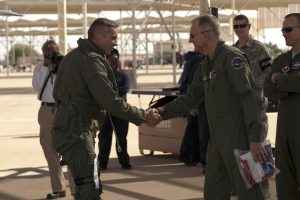 Maj. Gen. Morten Klever, program director of the Norwegian Fighter Aircraft Program, accepts the first two Norwegian F-35s after they arrived at Luke Air Force Base, Arizona, Nov. 10, 2015. Shortly after, a Norwegian pilot flew the F-35 Lightning II for the first time, in conjunction with the Royal Norwegian air force’s birthday.
Maj. Gen. Morten Klever, program director of the Norwegian Fighter Aircraft Program, accepts the first two Norwegian F-35s after they arrived at Luke Air Force Base, Arizona, Nov. 10, 2015. Shortly after, a Norwegian pilot flew the F-35 Lightning II for the first time, in conjunction with the Royal Norwegian air force’s birthday.
“To shape effective concepts of operations will require bringing the new equipment, and the people together to share experience and to shape a common way ahead.
“In this sense, we see Trident Juncture 2018 as especially important in shaping effective national C2 and working towards more integrated operations with allies coming to Norway for the exercise.
“We should plug and play in terms of our new capabilities; but that will not happen by itself, by simply adding new equipment.
“It will be hard work.
https://forsvaret.no/en/exercise-and-operations/exercises/nato-exercise-2018
“We have regular exercises in Norway like the Arctic Challenge Exercise, which is an exercise building on the weekly trilateral fighter training between Finland, Sweden, and Norway.
“In May/June 2017 this invitex will see more than one hundred fighter aircraft from 8 nations, including the UK and US, participating in high quality training in the Nordic countries.
“You also have other national exercises which are important in shaping our concepts of operations.
“We need to enhance engagement with core NATO allies, such as expanding our working relationship with allied airpower operating in Norway during exercises.
“We would love to see a UK F-35B squadron and a USAF F-35A deploy to Norway during an exercise and operate in the northern part of Norway under Norwegian command and control to see how we can get them to work together.
“They might fly either from home bases with air-to-air tanker or stage from Norway, and work on how we effectively can integrate those squadrons during joint operations.”
The slideshow above shows the arrival of the F-35As at RAF Lakenheath with the final photos highlighting planners working the base standup at RAF Lakenheath.
With the RAF and the USAF setting up four squadrons of F-35s between them at two nearby RAF bases, there is a clear opportunity to shape a common sustainment solution.
And the impact of so doing could be significant on the North Sea neighbors, namely, the Danes the Norwegians and the Dutch.
This is clearly a key way ahead in building out NATO capabilities going forward, which provides a 21stcentury example of burden sharing which delivers relevant capabilities.
http://www.sldforum.com/2016/05/leveraging-the-raf-marham-and-raf-lakenheath-strategic-opportunity/
I discussed this strategic shift last year with the wing commander at RAF Lakenheath. Col., now Brigadier General select, Novotny highlighted the importance of such an effort.
“I see there is great potential for two countries to develop in concert, side-by-side, and to set, set the model for joint operations.
“As we get this right, we can bring in the Danes, the Norwegians and Dutch who are close in geography and the Israelis and Italians as well to shape the evolving joint operational culture and approach.
“Before you know it, you’ve got eight countries flying this airplane seamlessly integrated because of the work that Lakenheath and Marham are doing in the 20 nautical miles radius of the two bases.”
https://www.sldinfo.com/synergy-and-building-out-extended-nato-defense/


